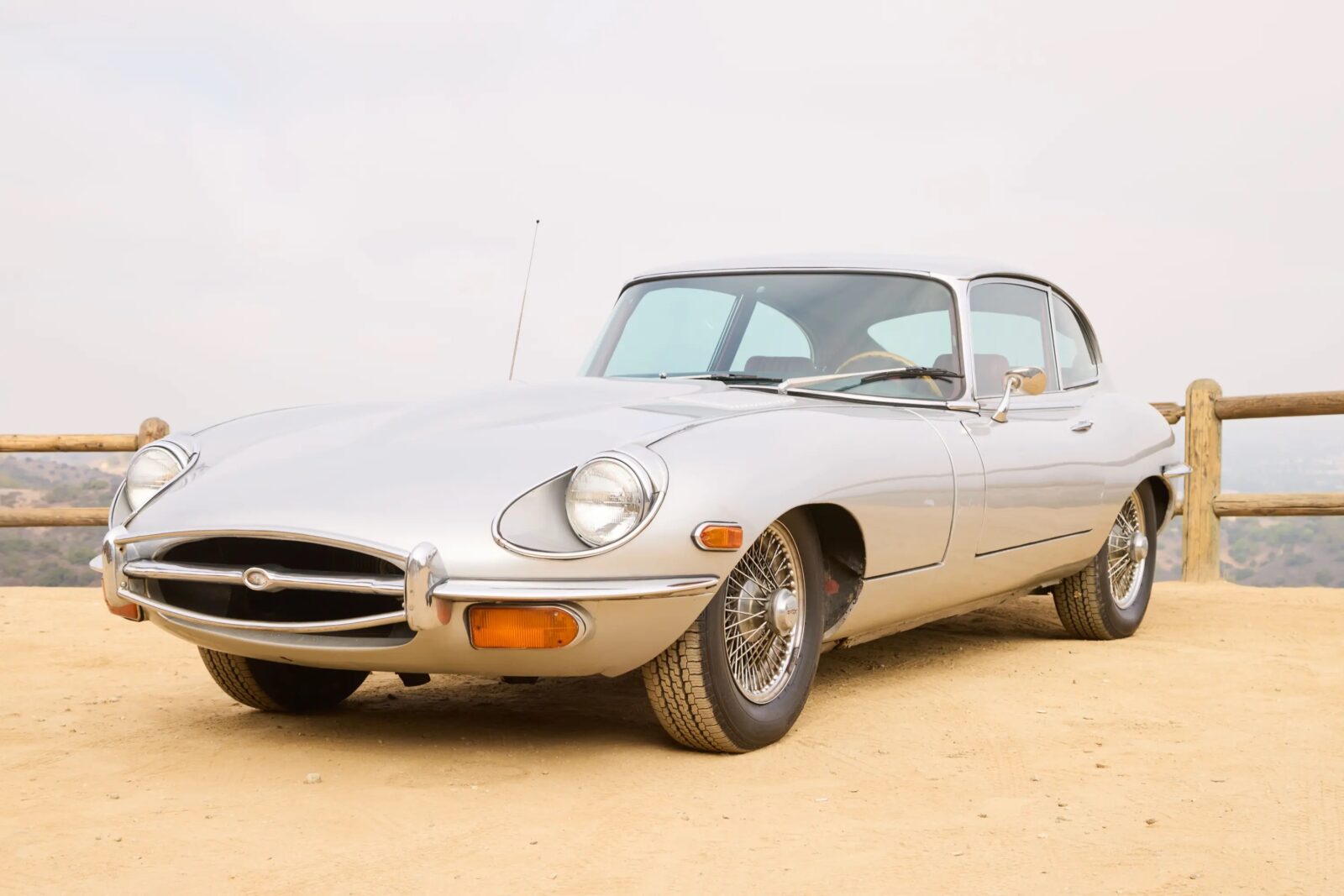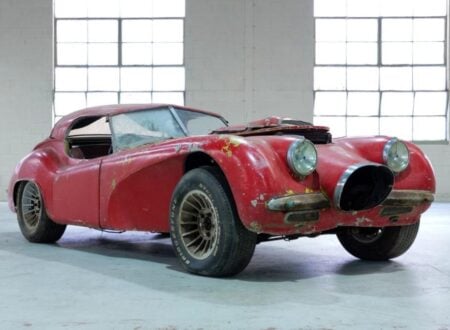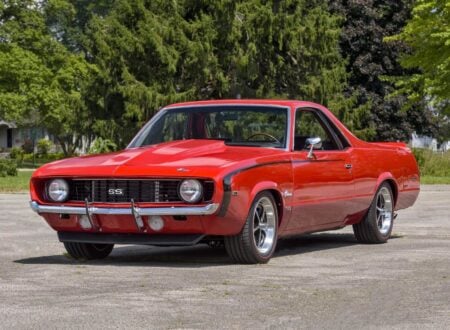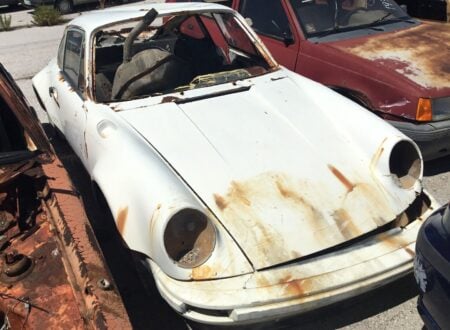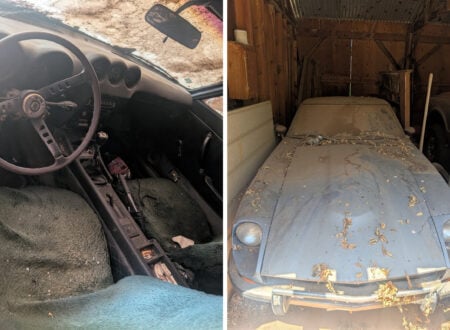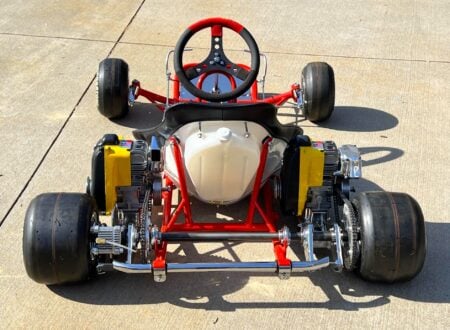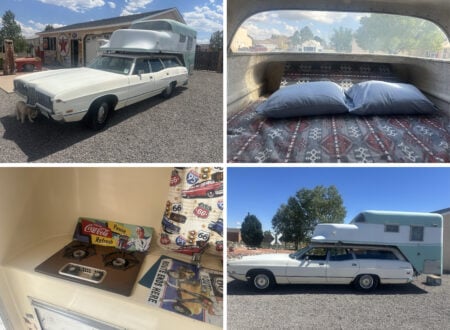This is the 1969 Jaguar E-Type that was bought new by Hollywood legend Jack Lemmon and owned by him for a number of years before he sold it to fellow Hollywood luminary Leo Salkin.
Salkin was a Canadian animator and writer best-known for his Emmy-nominated half-hour CBS TV special, The 2000 Year Old Man, with Mel Brooks and Carl Reiner. He also worked on Lady and the Tramp, The Gerald McBoing-Boing Show, Mr Magoo’s 1001 Arabian Nights, the Emmy-winning The Alphabet Conspiracy, The Alvin Show, The Funny Company, Omnibus, and The Addams Family.
Fast Facts: An Ex-Jack Lemmon Jaguar E-Type
- The 1969 Jaguar E-Type 2+2 shown here was originally purchased new by actor Jack Lemmon and later owned by Canadian animator Leo Salkin. Lemmon’s car was specified in silver with red leather, it had wire wheels, a wood-rim steering, air conditioning, and an automatic transmission. It is now offered through Julien’s “Movies and Motorcars” auction with an estimate of $40,000 to $60,000.
- The E-Type debuted at the 1961 Geneva Motor Show, instantly captivating the public and media alike. Designed by Malcolm Sayer with engineering led by William Heynes, it drew heavily from Jaguar’s Le Mans-winning D-Type. Its semi-monocoque structure, lightweight build, and aerodynamic shape delivered race-bred handling in a road car, while the XK inline-six provided genuine 150 mph performance.
- Across its production life, the E-Type evolved through three main series. The Series I introduced the iconic covered headlights and 3.8/4.2 XK straight-six engines. The Series II added safety and cooling updates, uncovered headlights, and US emissions laws trimmed power slightly. The Series III replaced the XK engine with a 5.3 liter V12, transforming the car into a grand tourer with more comfort and power steering as standard.
- Celebrated for its beauty and performance, the E-Type became a fixture among celebrities and cultural icons. Enzo Ferrari famously called it “the most beautiful car ever made.” Notable owners included Steve McQueen, George Harrison, Brigitte Bardot, Princess Grace of Monaco, and Jack Lemmon himself, whose documented example is covered in this article.
History Speedrun: The Jaguar E-Type
When Jaguar unveiled the E-Type at the Geneva Motor Show in March of 1961, it stunned the motoring media and created news headlines around the world. Enzo Ferrari reportedly called it “the most beautiful car ever made,” a sentiment echoed by countless others ever since.
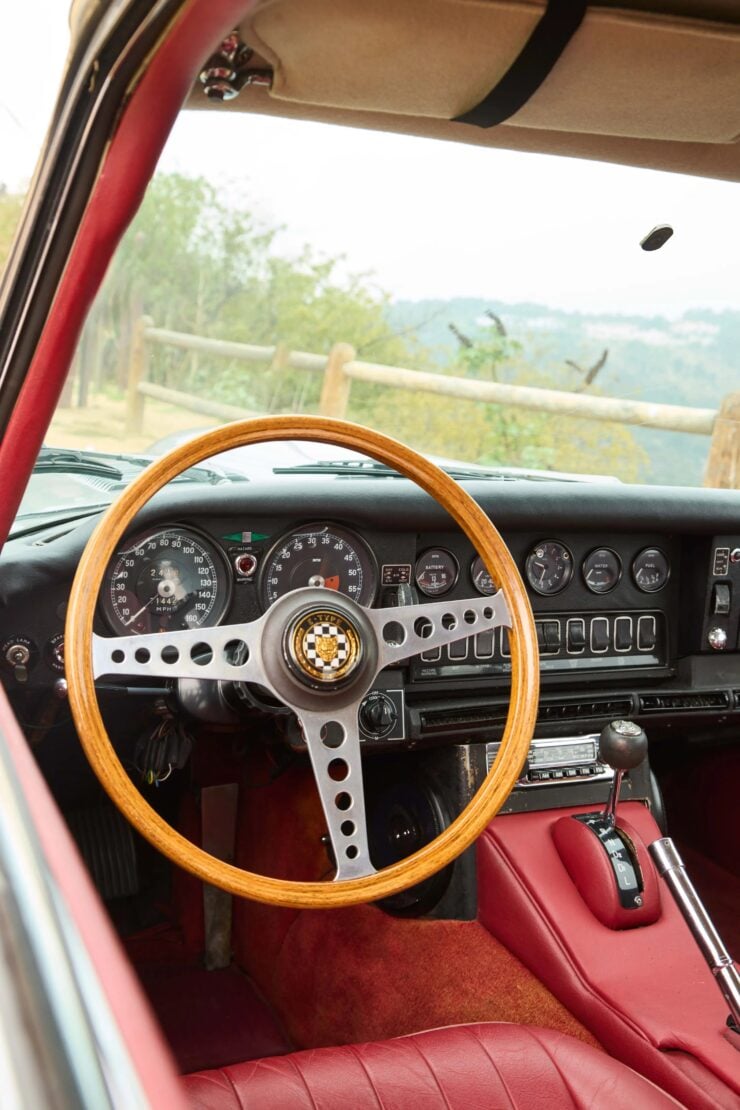

Although much attention is paid to the design of the E-Type it’s important to note that behind its styling lay years of top-flight motorsport engineering – much of which was drawn directly from Jaguar’s wildly successful D-Type Le Mans program.
The E-Type’s story really began in the late 1950s when Jaguar was looking to develop a successor to the outgoing XK150.
Chief engineer William Heynes and aerodynamicist Malcolm Sayer (formerly of the Bristol Aeroplane Company) were tasked with creating a fast, lightweight monocoque sports car with cutting-edge handling. They built upon the D-Type’s unique semi-monocoque structure, pairing a steel central tub with a tubular front subframe to cradle the engine and suspension.
Under its long, tapering bonnet sat the proven XK inline-six, a twin-cam aluminum-head engine derived from Jaguar’s postwar racers. Early production cars carried the 3.8 liter version producing 265 bhp and 260 lb ft of torque, mated to a 4-speed gearbox. With a top speed of 150+ mph, the E-Type was faster than many Ferraris or Aston Martins – and those cars cost twice as much. It was the performance bargain of the early 1960s.
The Jaguar E-Type Series I
The first-generation E-Type, better-known today just as the Series I, established the E-Type formula. It had glass-covered headlamps, small taillights above the rear bumpers, and the choice of a convertible two-seater Roadster or tin-top coupe.
In 1964, Jaguar enlarged the XK engine to 4.2 liters, improving torque to 283 lb ft while keeping the same 265 bhp peak. The interior gained more comfortable seats and a full-synchromesh gearbox – addressing some early complaints about drivability.


Even in standard trim, the E-Type used advanced suspension for the time, it was independent all around, with torsion bars at the front and a sophisticated rear setup of lower wishbones, radius arms, and coil-over dampers.
Four-wheel disc brakes came as standard, they were inboard at the rear. Weighing roughly 2,800 lbs, the car’s handling and balance were remarkably good for the era, and it was a darling of the motoring press of the time.
The Jaguar E-Type Series II
The Series II brought some visible and mechanical updates. American safety rules prompted (controversial) uncovered headlamps and repositioned much larger taillights below the bumpers. Cooling was improved with a wider grille opening, and the 4.2 liter XK remained but with emissions-compliant equipment carburetors that trimmed power slightly to about 246 bhp.
Interior ventilation and switchgear were modernized, while the new collapsible steering column reflected changing safety standards. Although purists sometimes lamented the cosmetic changes, the Series II was arguably the most usable of the six-cylinder cars, with better cooling and overall refinement.
The Jaguar E-Type Series III
By the early 1970s, Jaguar needed fresh power to make up for tightening US emissions rules and heavier safety gear. The answer was the new 5.3 liter V12, an aluminum engine producing 272 bhp and 304 lb ft of torque. It made the E-Type effortless to drive, with 0 to 60 mph dispatched in under 7 seconds, and a top speed just shy of 150 mph.
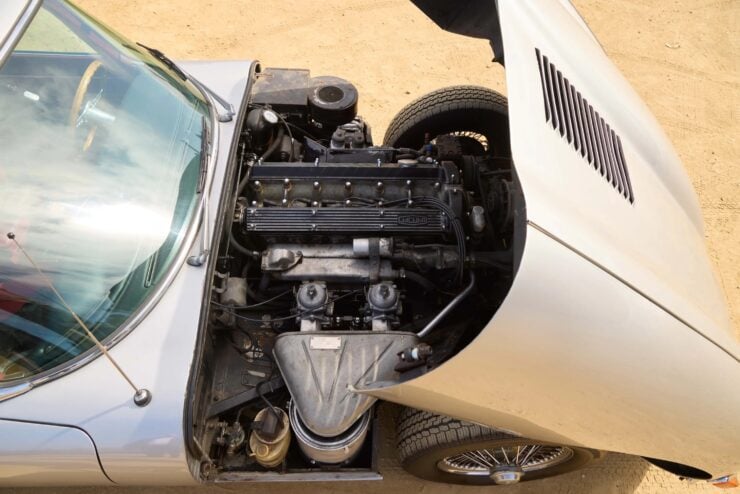

The Series III, identifiable by its flared wheel arches, larger cross-slatted grille, and quad exhausts – it was offered as a 2+2 coupe and roadster only. Power steering became standard, and the longer wheelbase from the previous 2+2 made for a grand-touring character rather than a pure sports-car feel. It would be the final evolution before the E-Type bowed out in 1974.
The E-Type’s mix of styling and performance made it a natural for the spotlight. Steve McQueen owned one briefly, George Harrison of The Beatles had a dark blue Series I 4.2, and Frank Sinatra famously quipped, “I want that car, and I want it now,” after seeing it at its New York debut.
Brigitte Bardot, Tony Curtis, Jack Lemmon, and Princess Grace of Monaco were all photographed with theirs, sealing the E-Type’s image as one of the 1960s four-wheeled symbols of success and taste.
The Ex-Jack Lemmon Jaguar E-Type Shown Here
The car you see here was bought new by Jack Lemmon, it’s a 1969 Jaguar E-Type 2+2 – meaning it’s the more practical longer-wheelbase version with front and rear seating for up to four people plus some luggage.
Lemmon ordered the car with wire wheels, an air conditioning system, and a wood grain sports steering wheel. It has silver paintwork, and a red leather interior, with the 4.2 liter straight-six sending power back through a 3-speed automatic transmission.
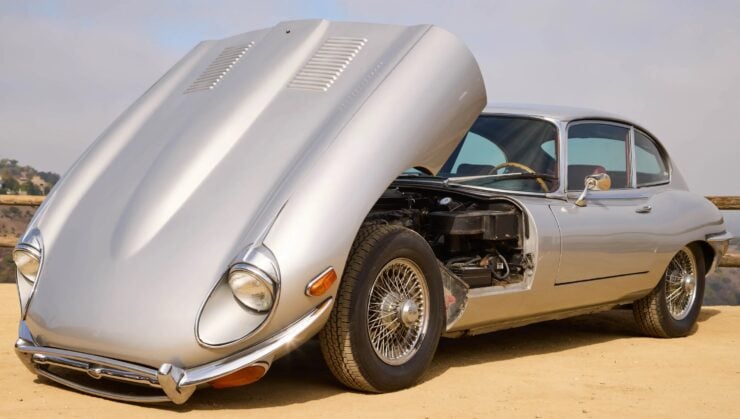

The car was sold by Lemmon to Emmy-winning animator Leo Salkin in the early 1970s, and Salkin would keep it for over 20 years – into the 1990s. After this it was sold to its current owner who wrote to Lemmon and got written confirmation that the car had indeed belonged to him (now included in the same).
It’s now being offered for sale as part of the Movies and Motorcars auction held by Julien’s in November, with a price guide of $40,000 – $60,000 USD. If you’d like to read more about it or register to bid you can visit the listing here.

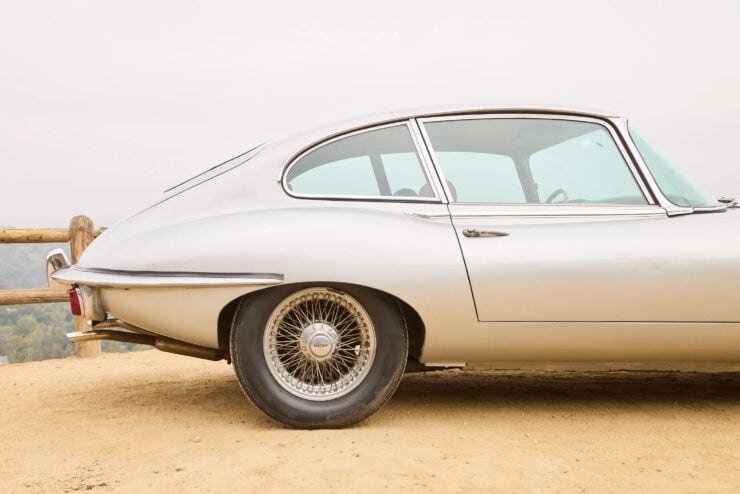
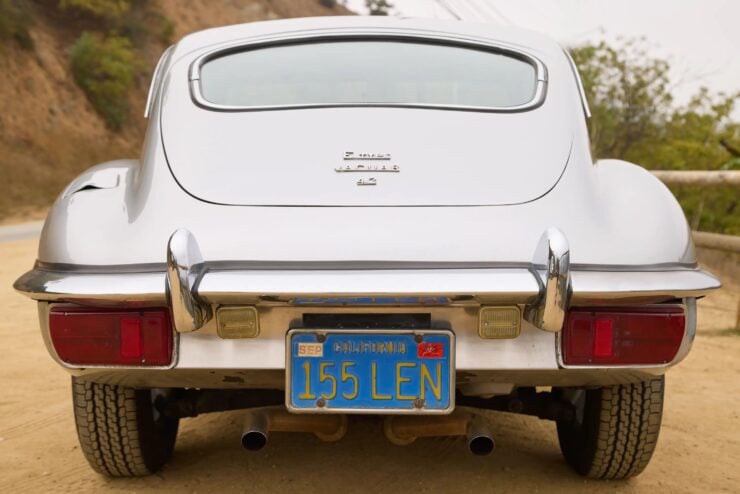
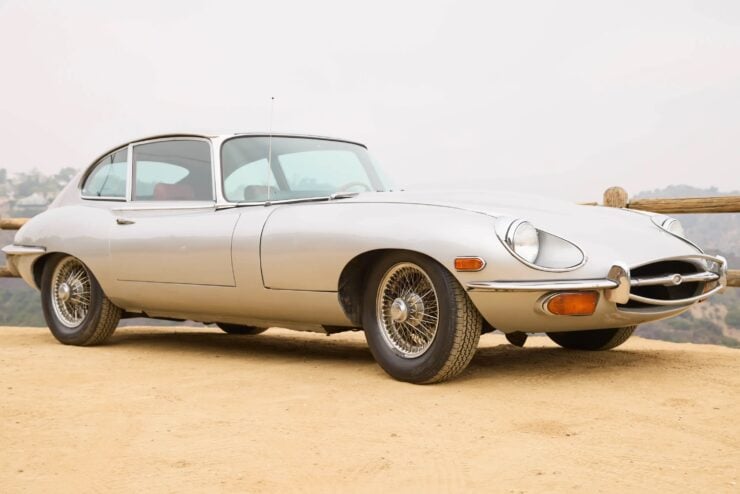
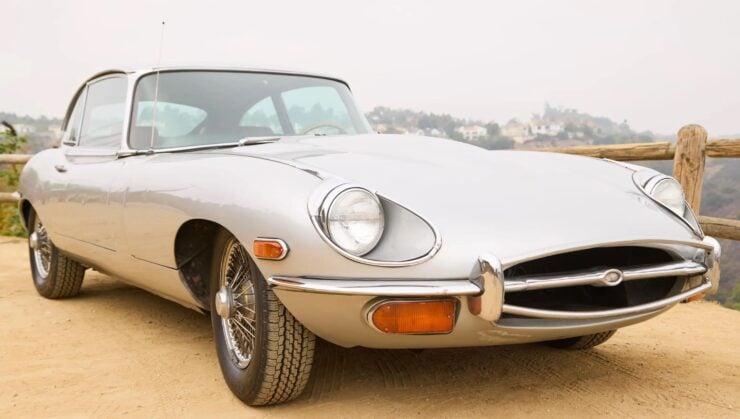
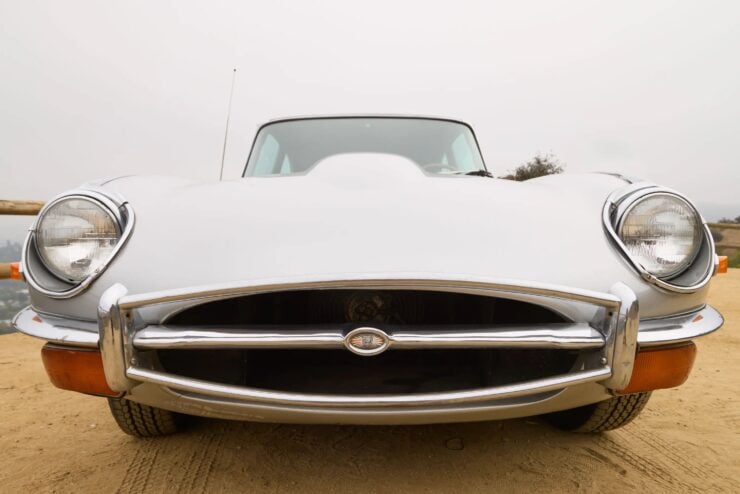

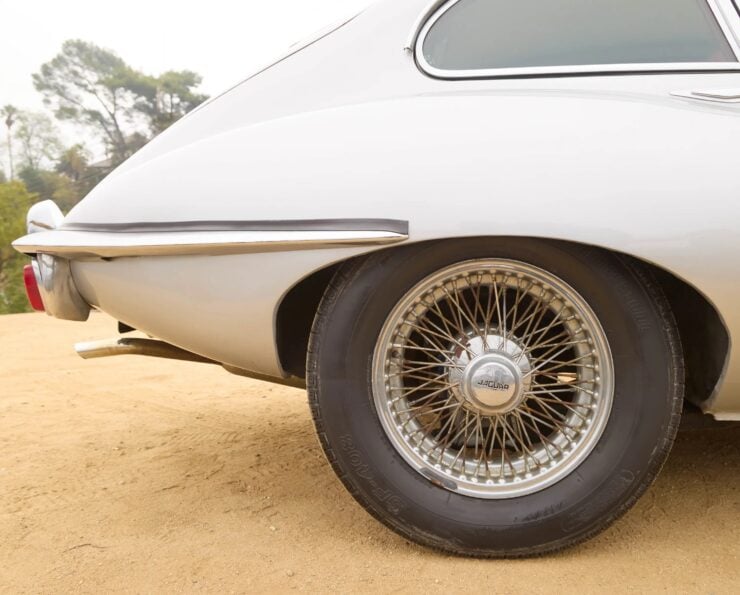

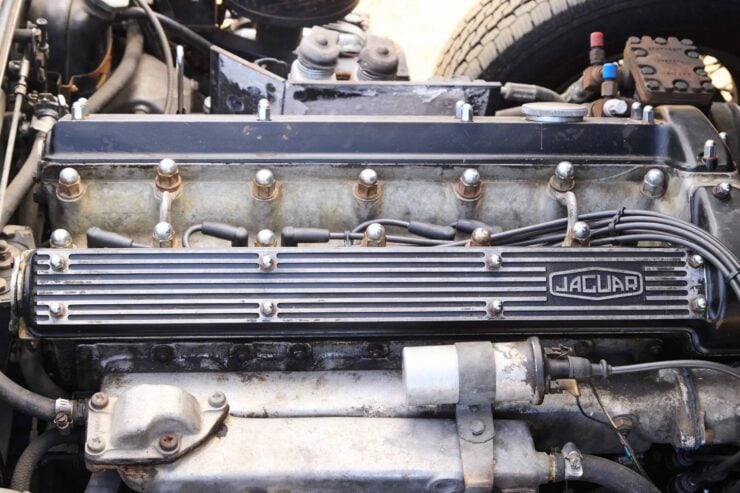
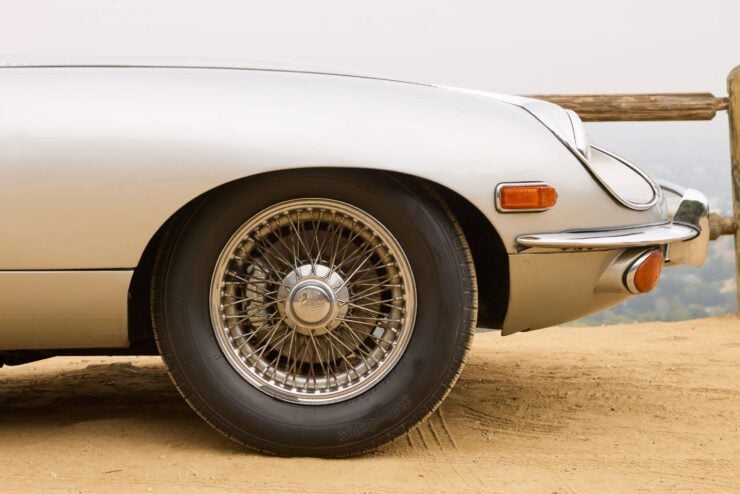

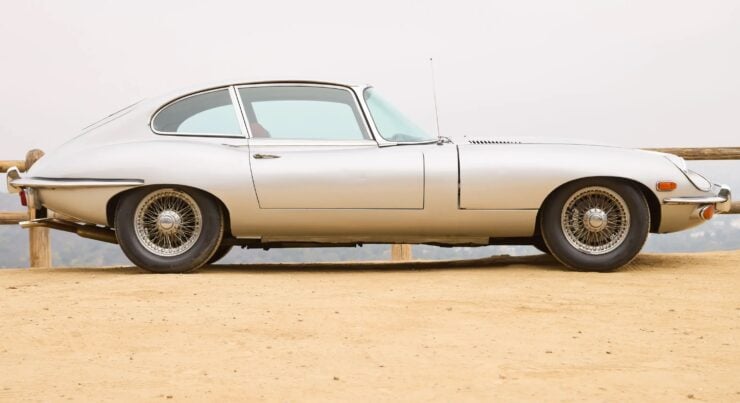
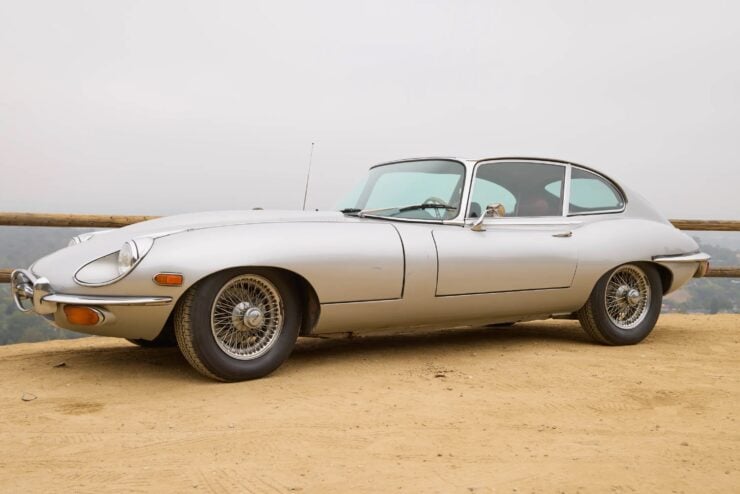

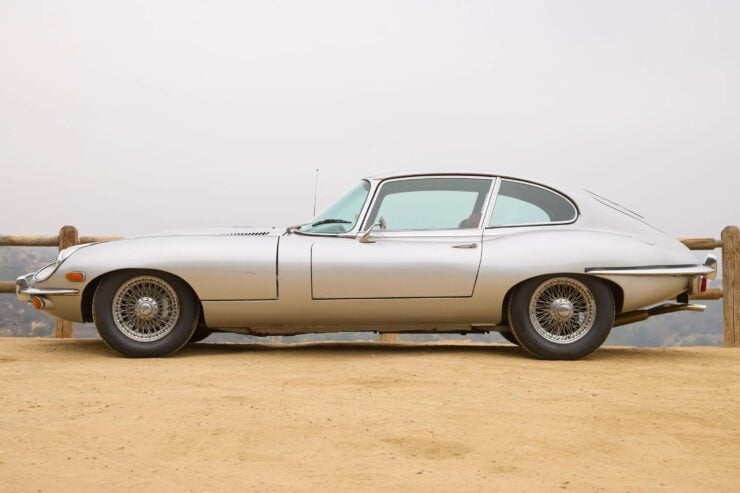
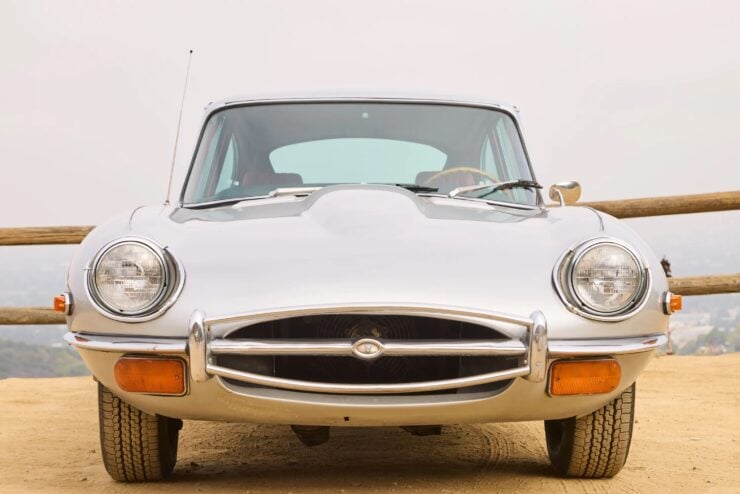
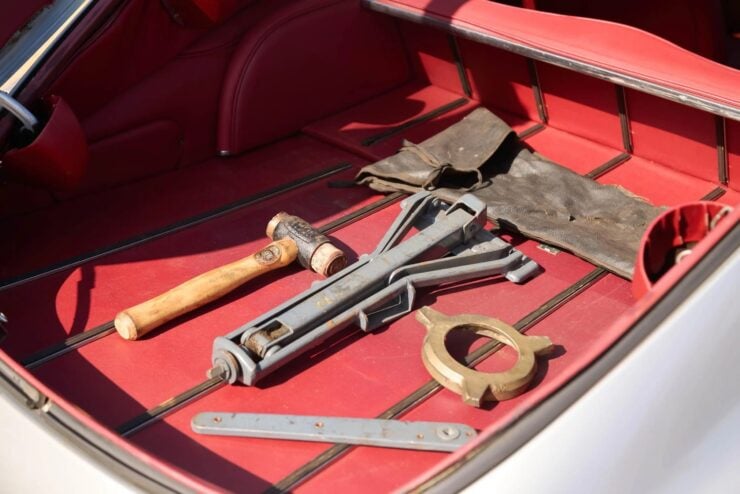


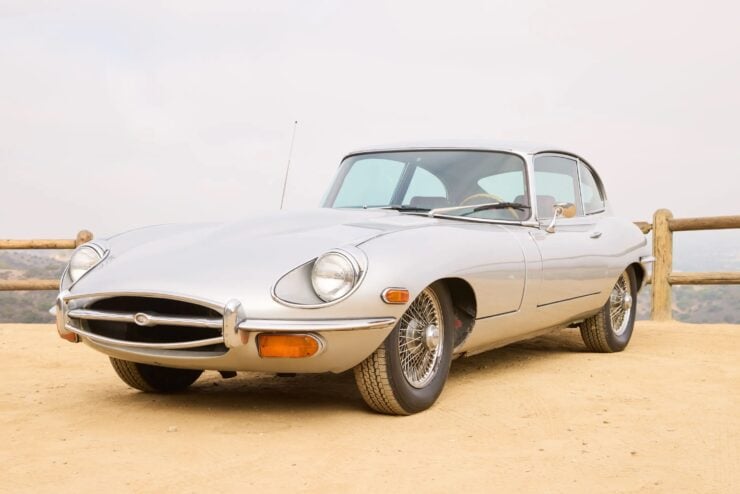
Images courtesy of Julien’s

